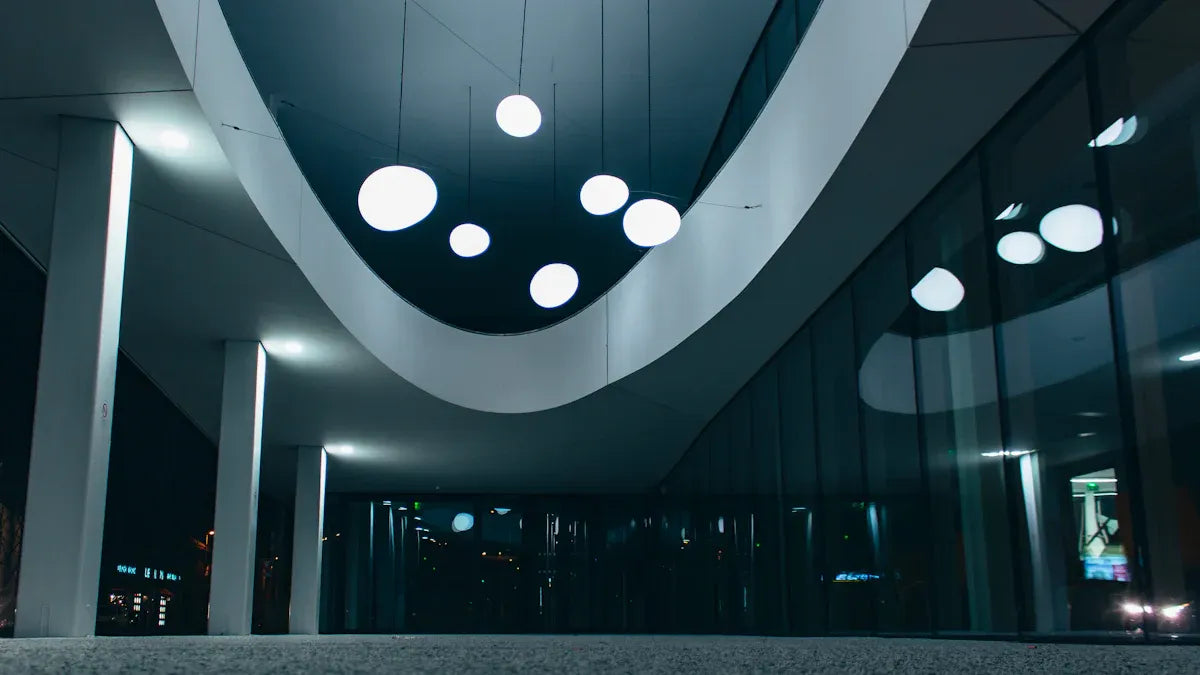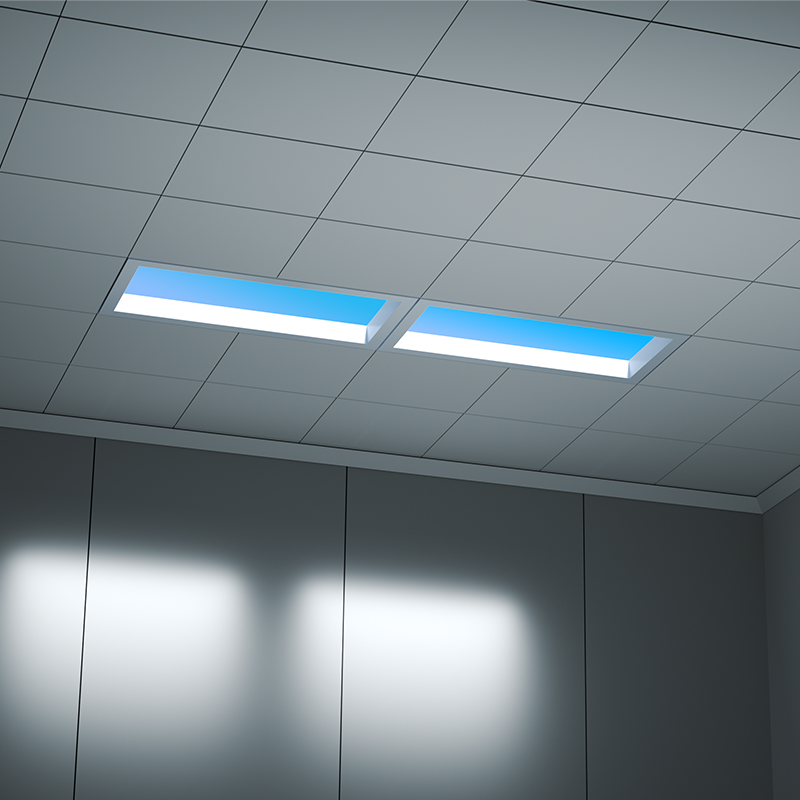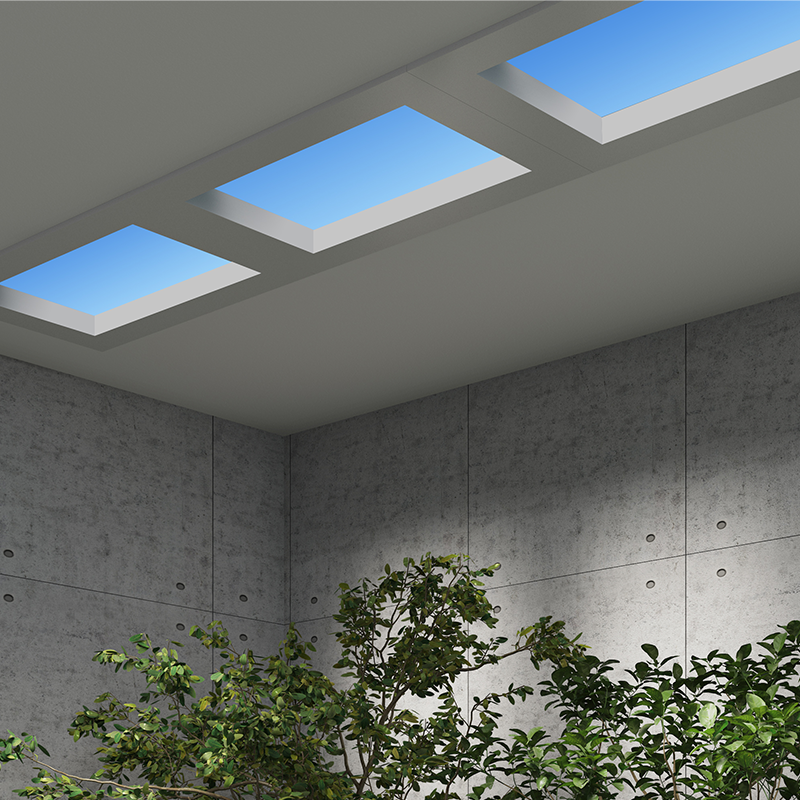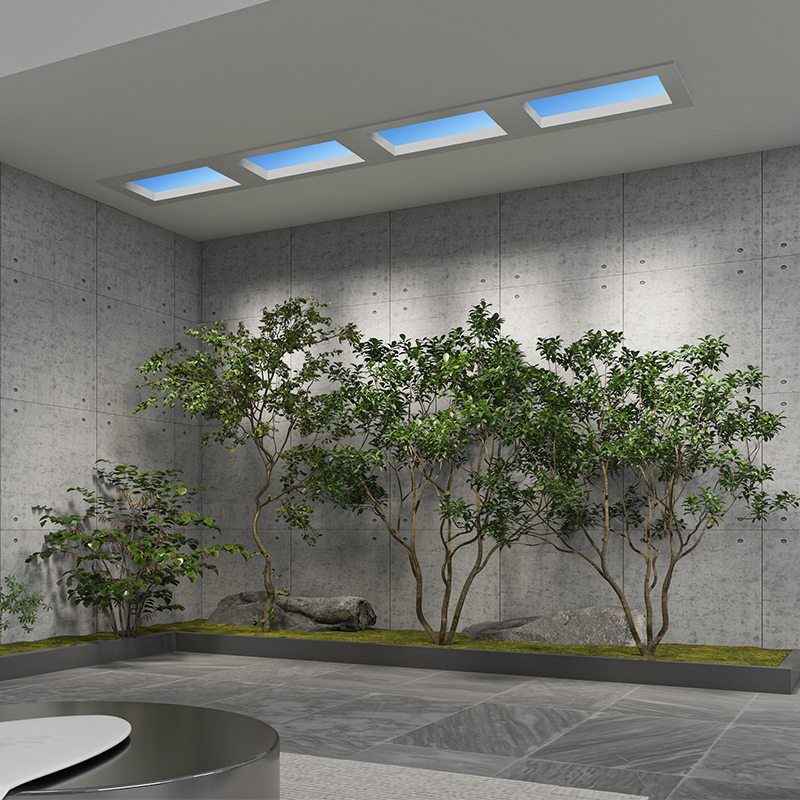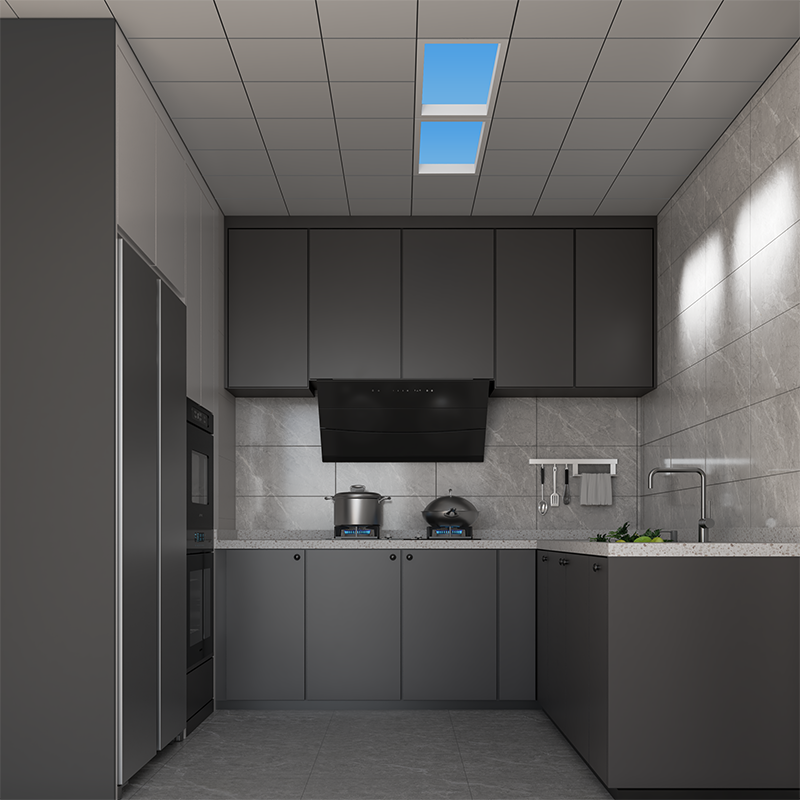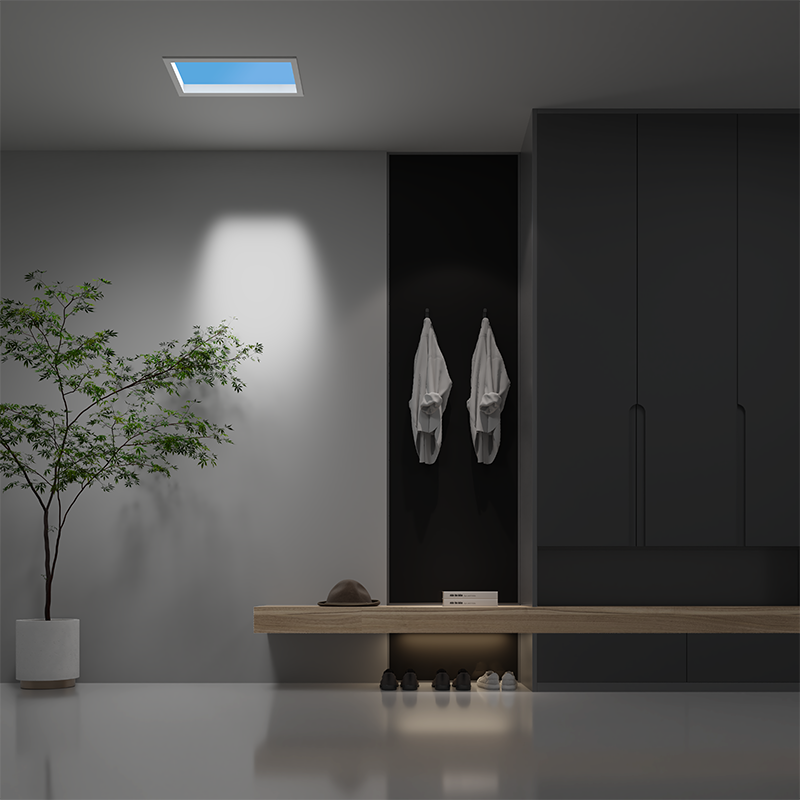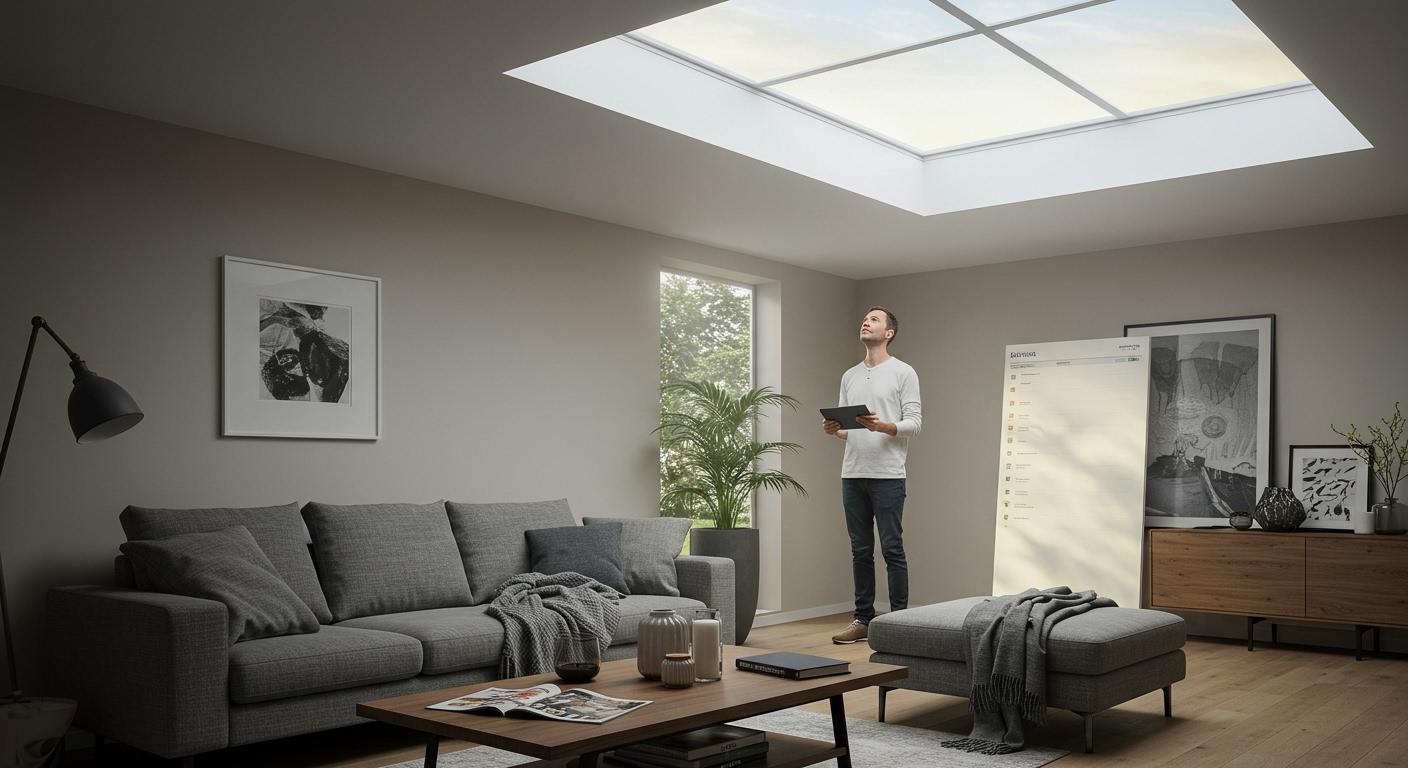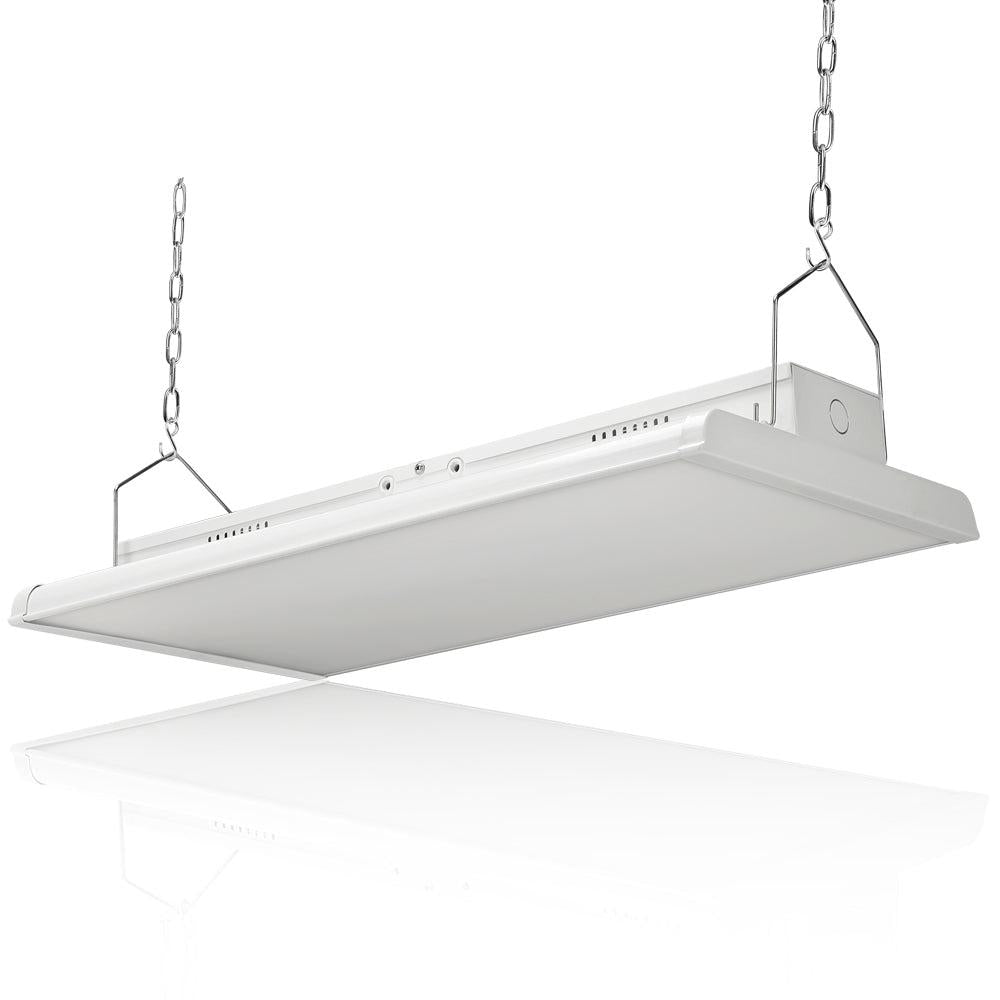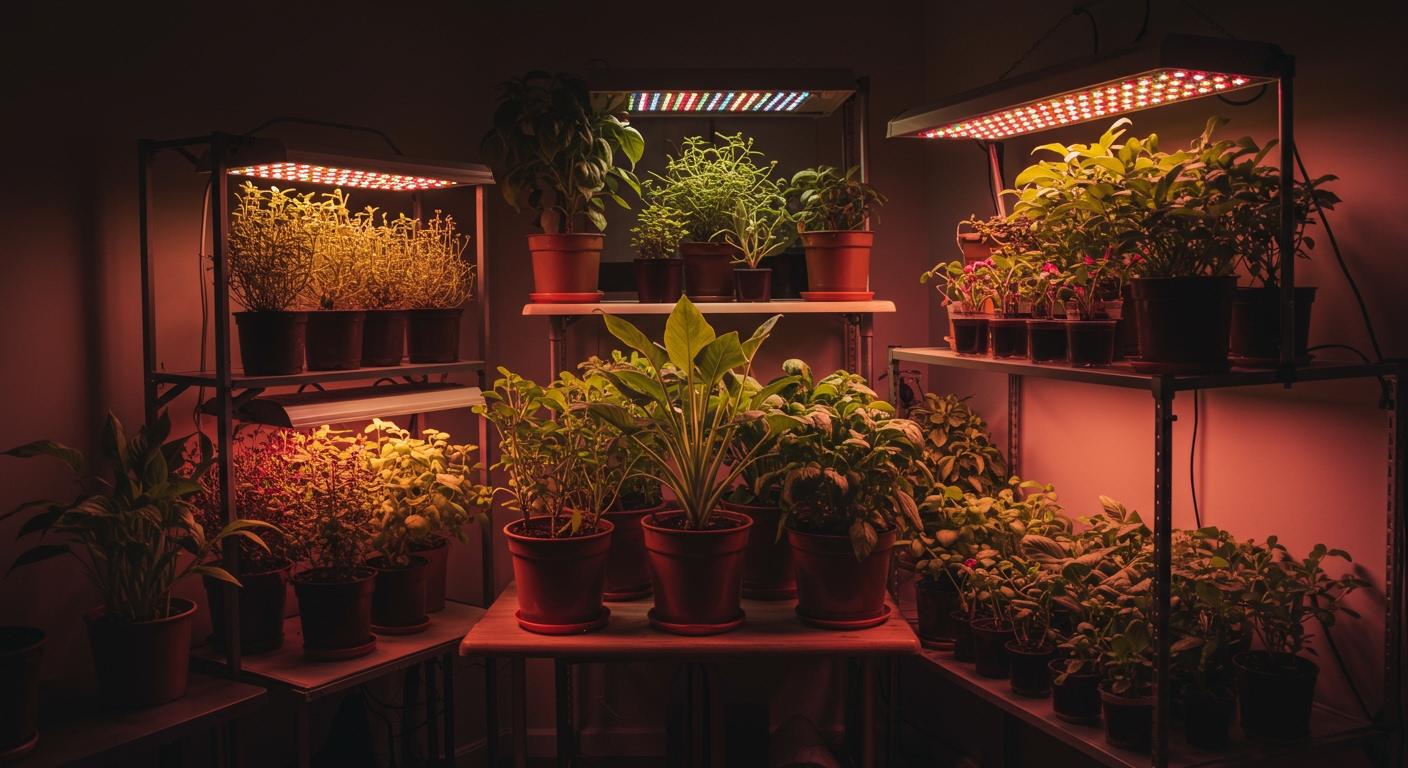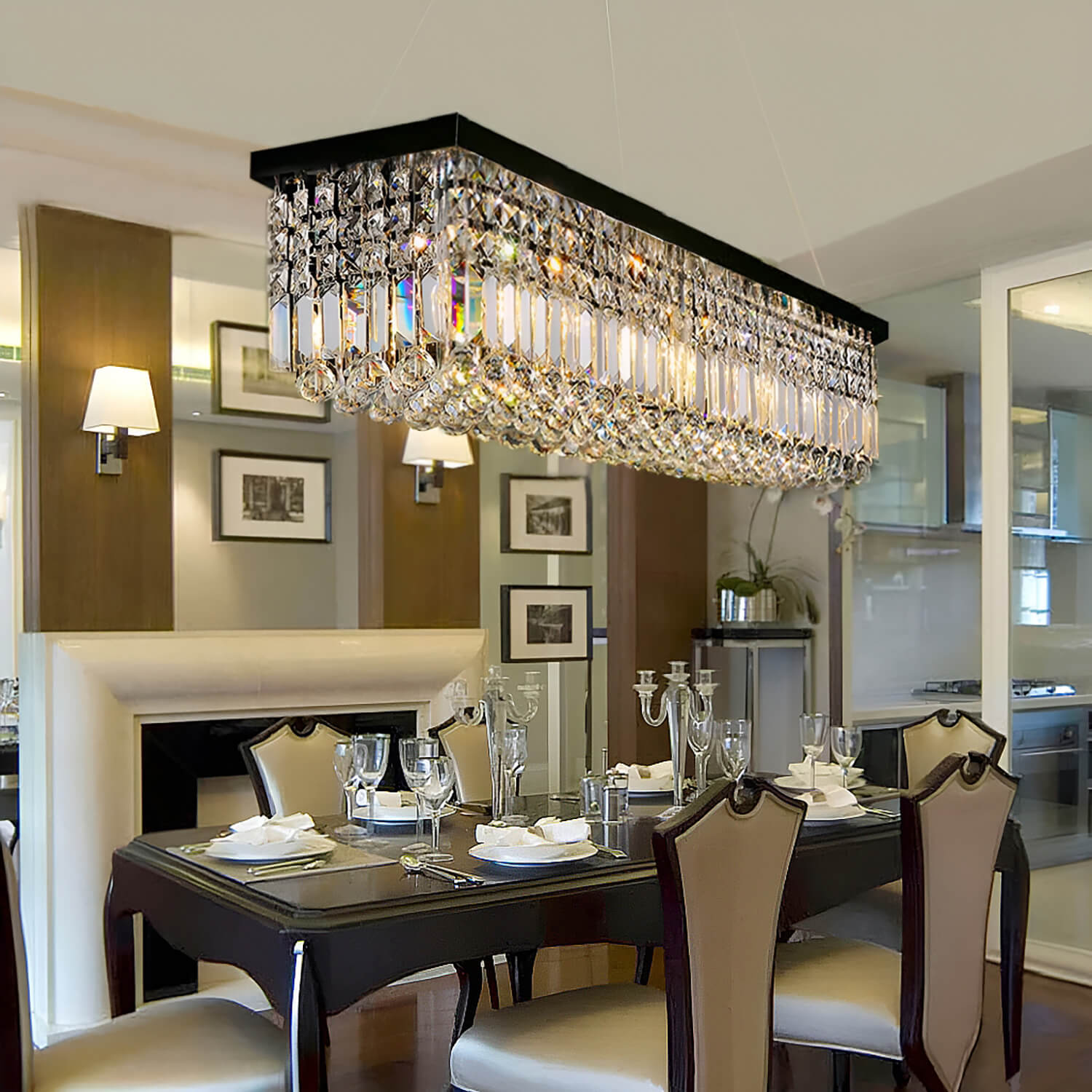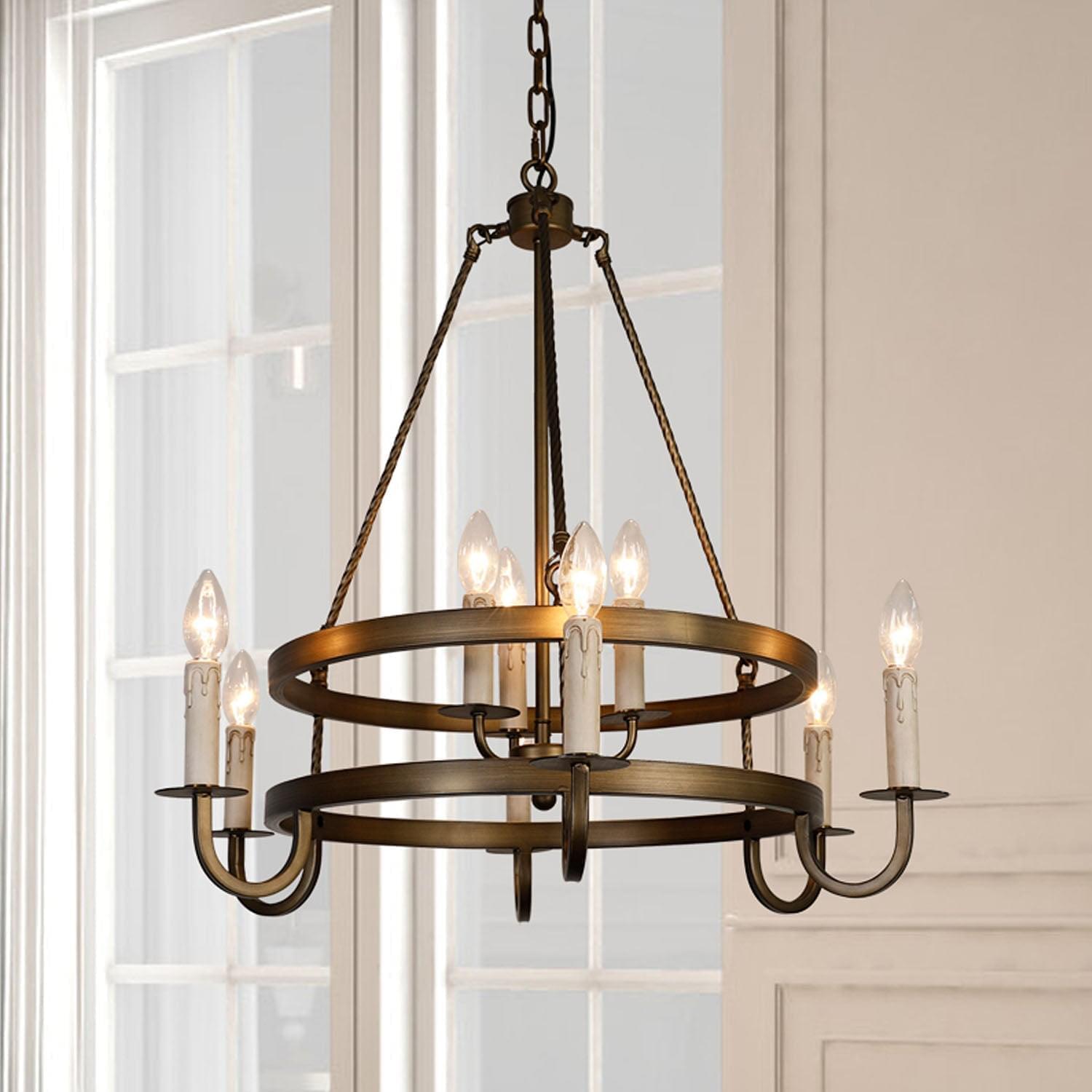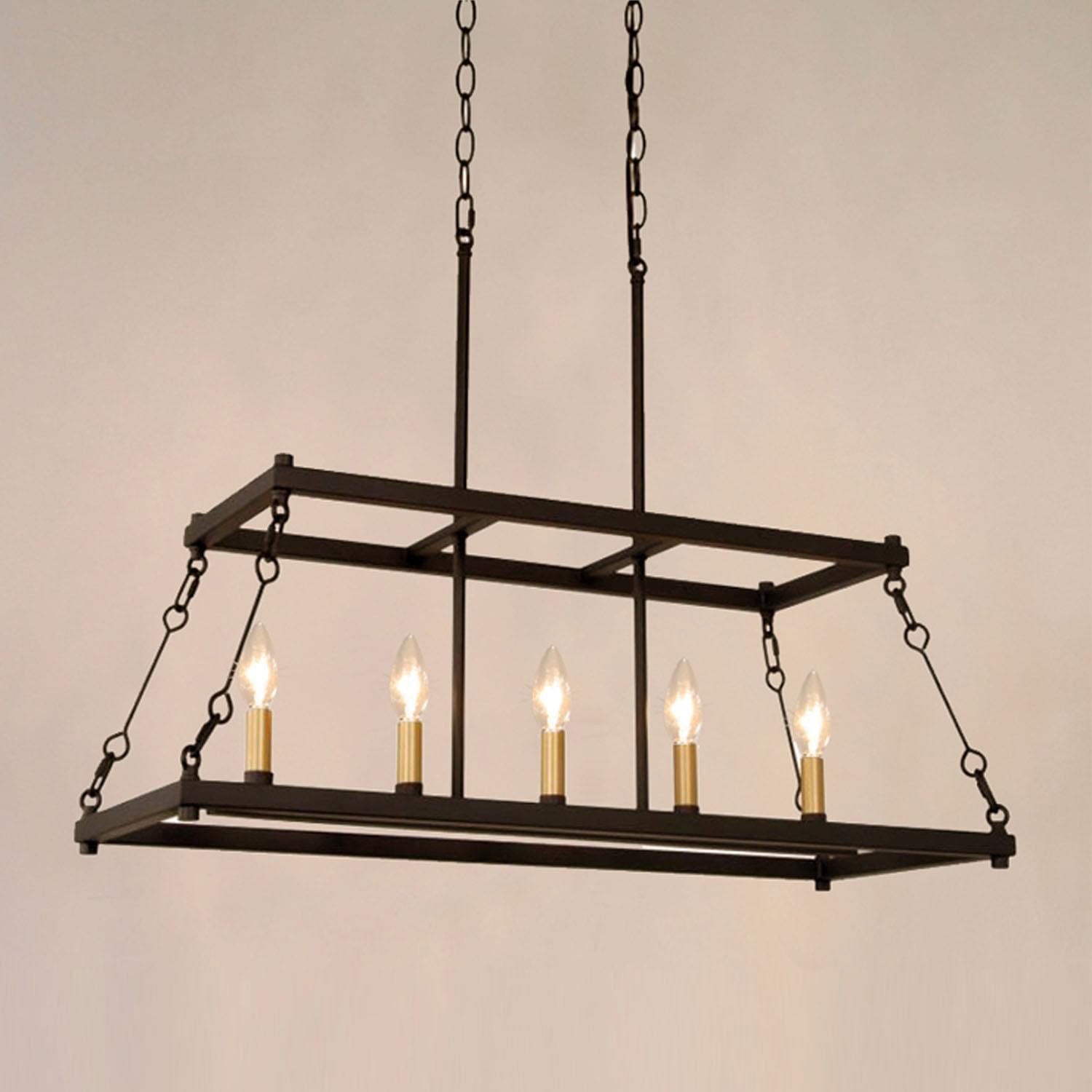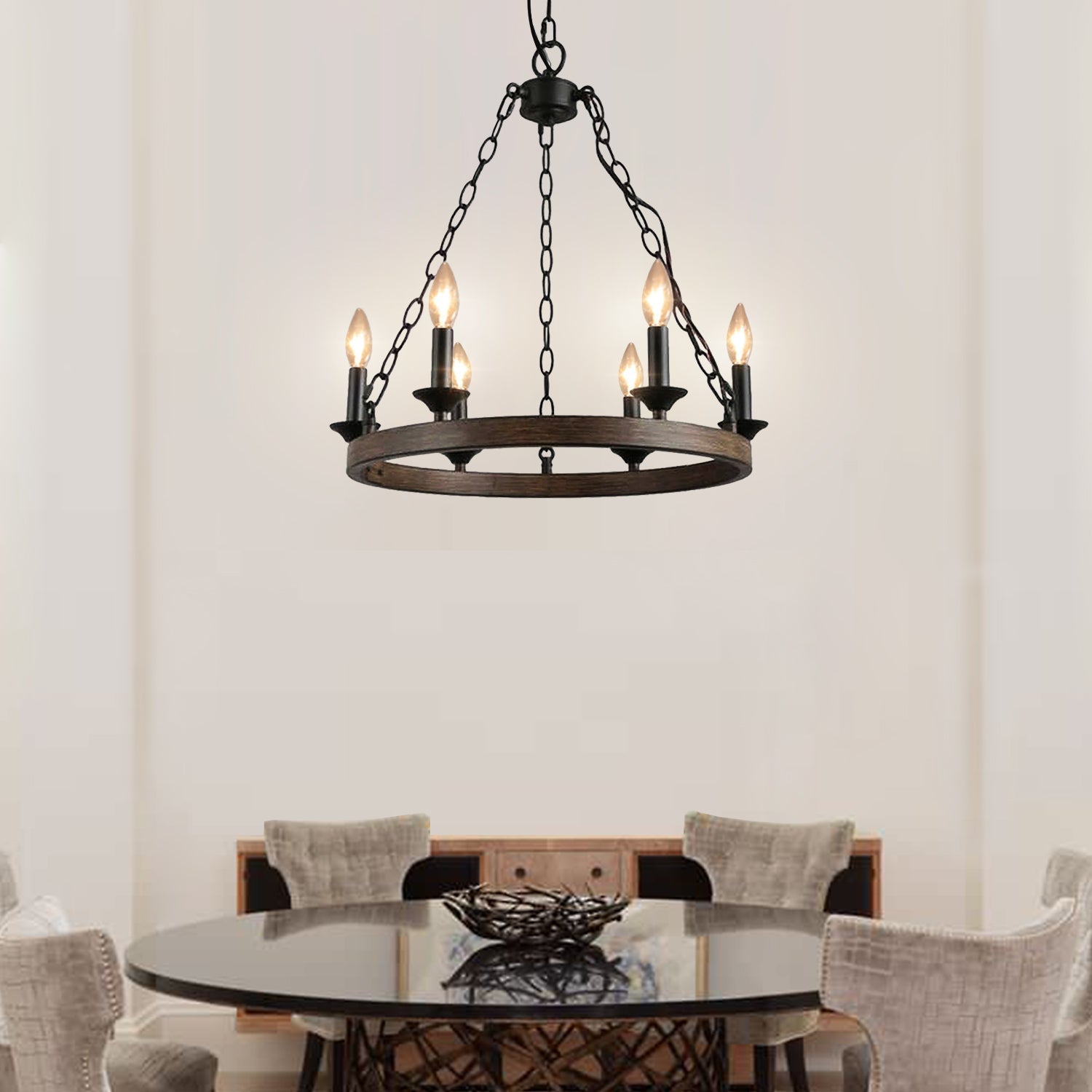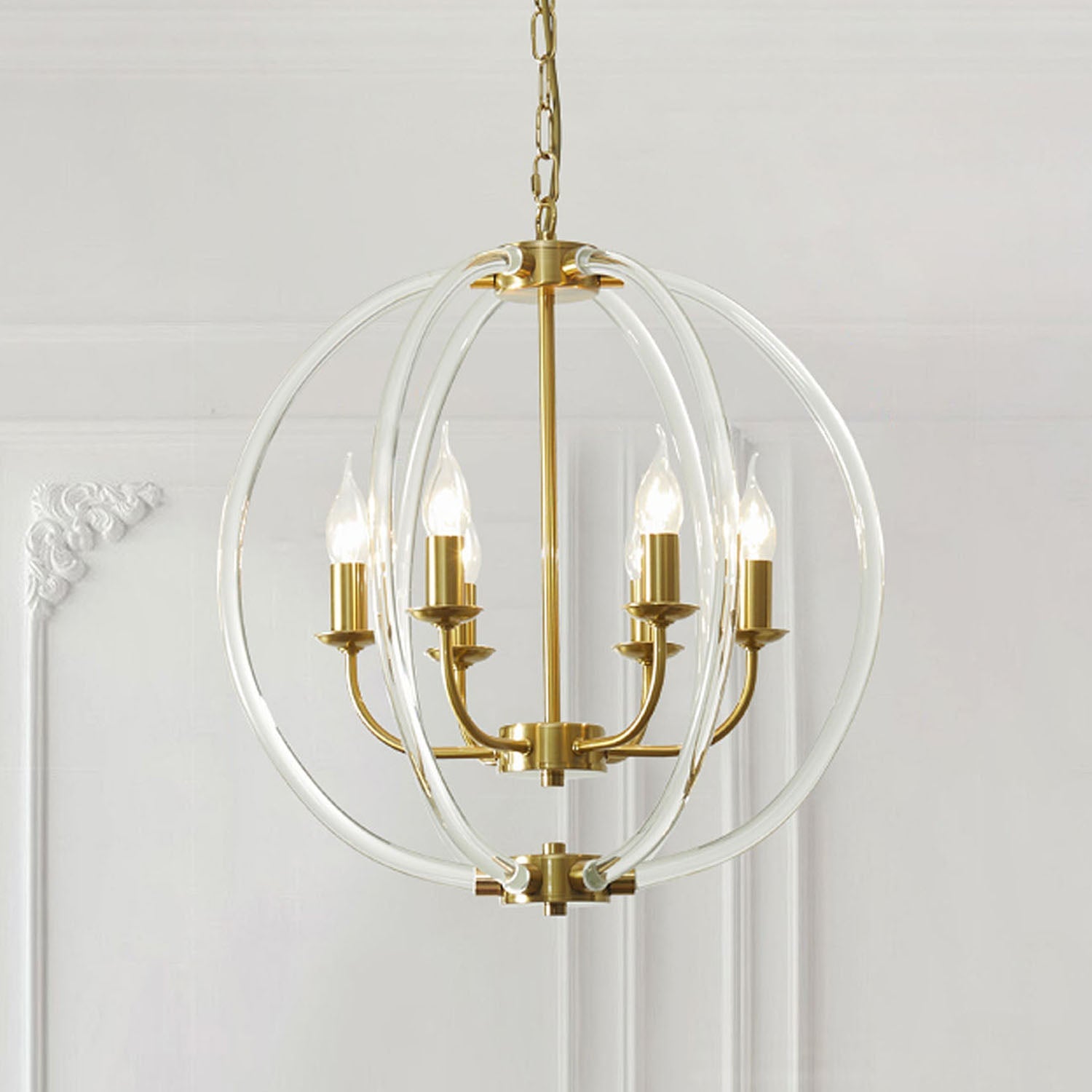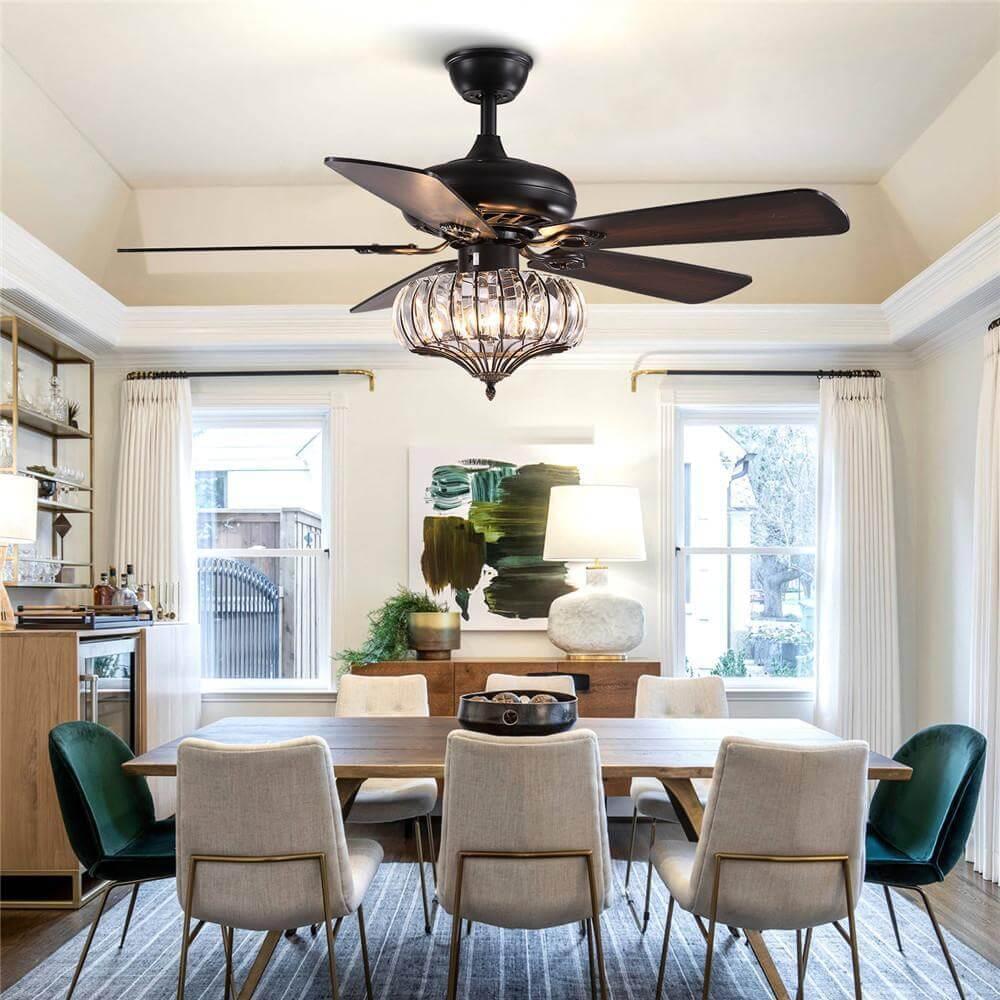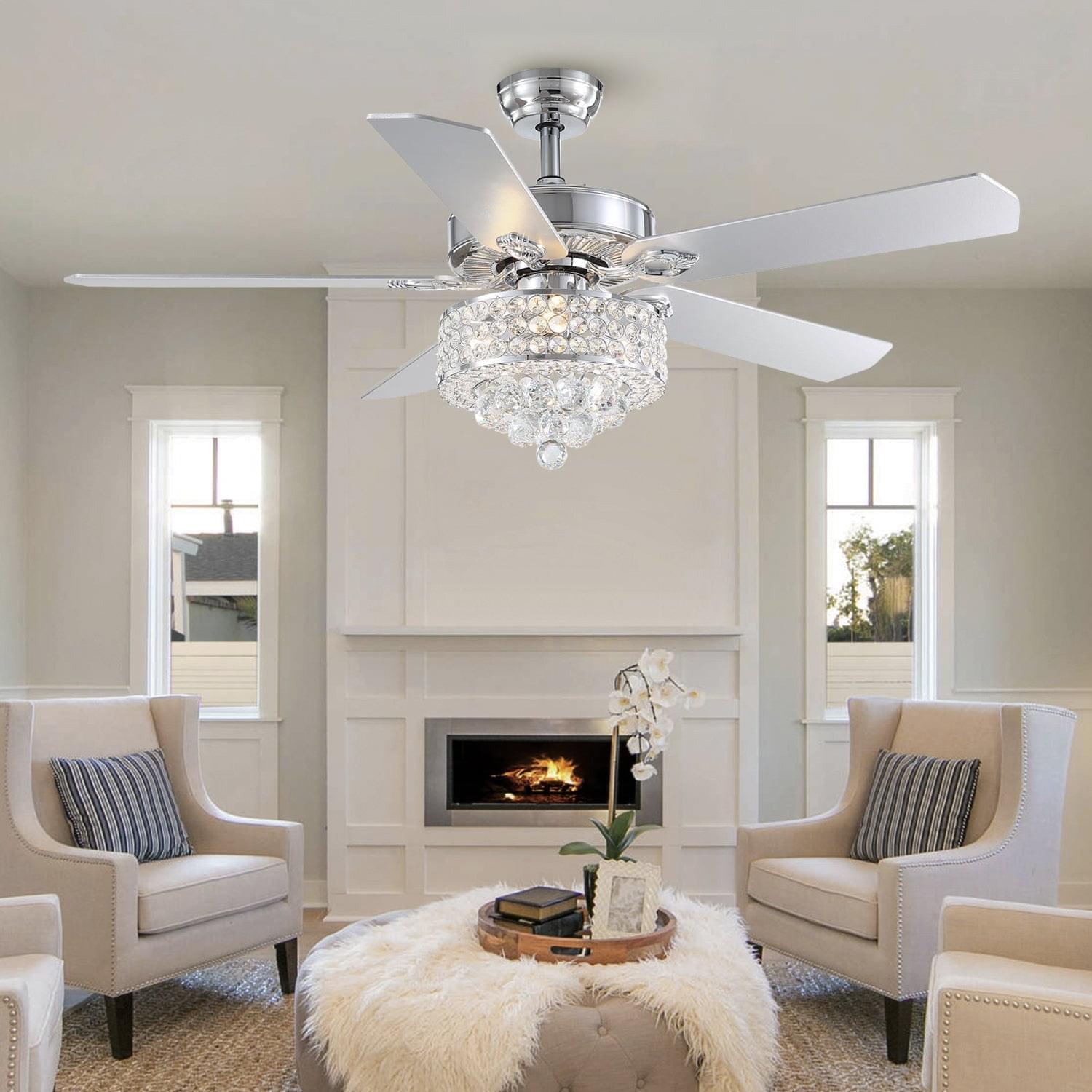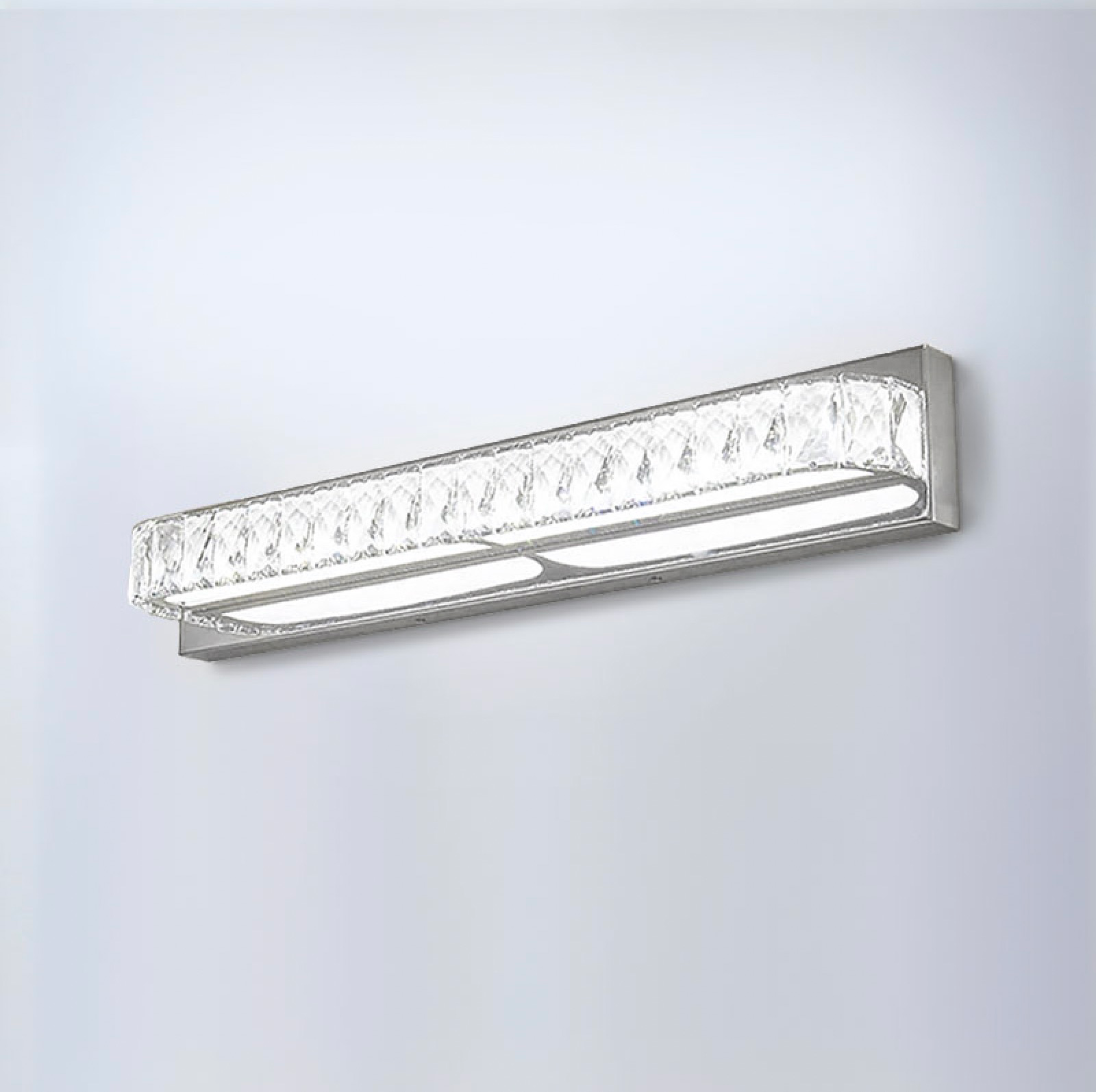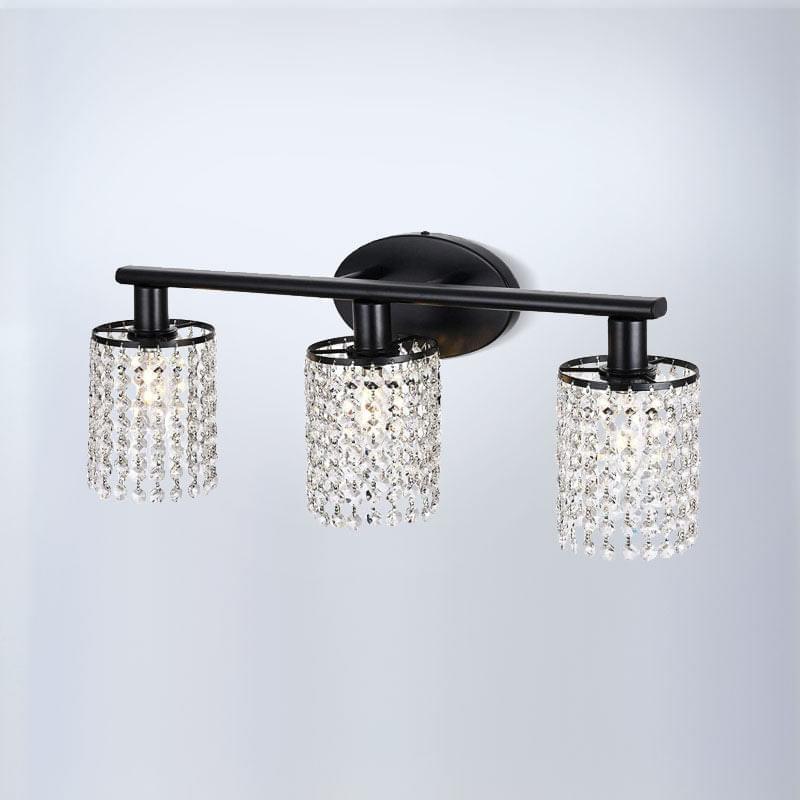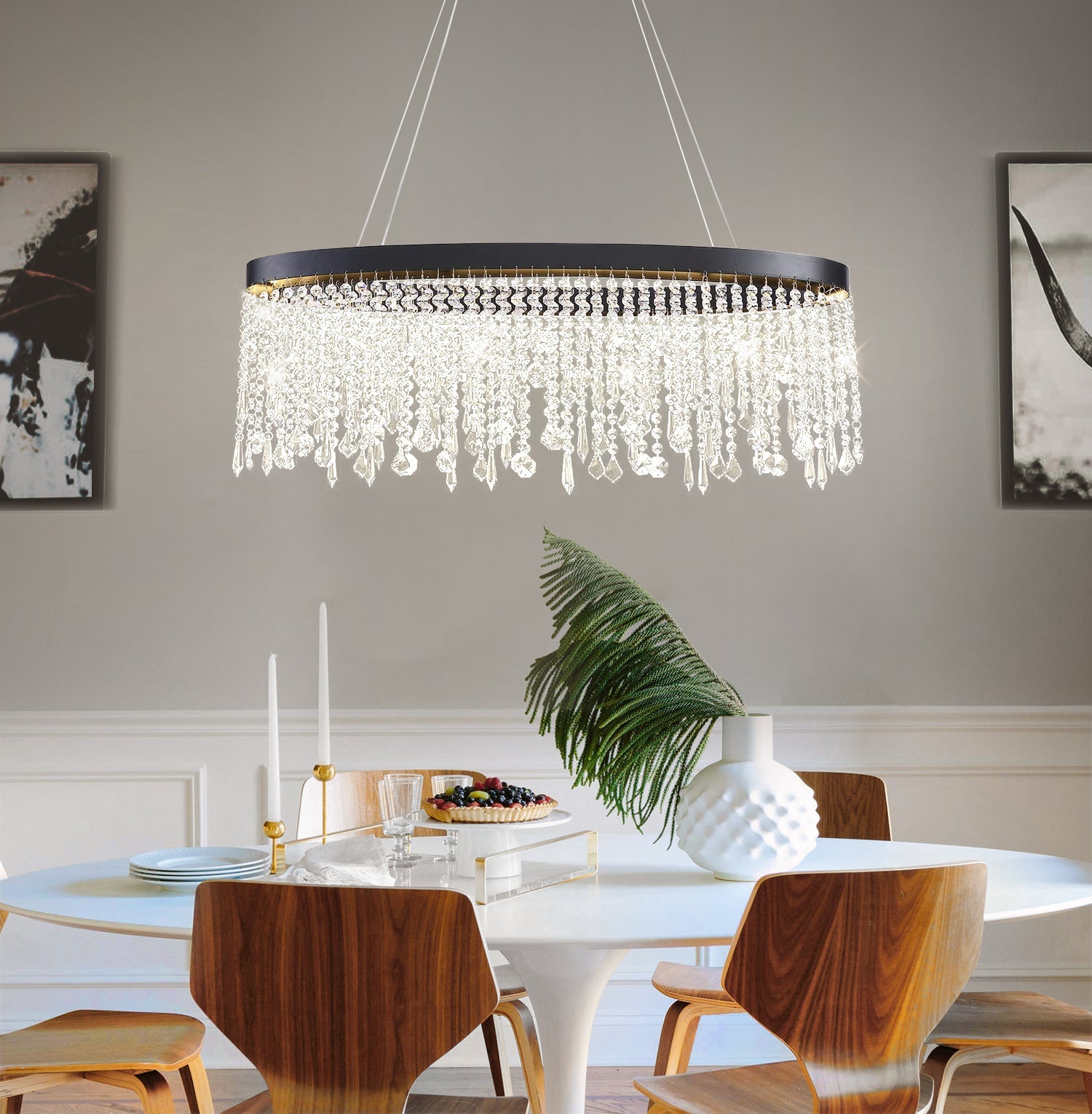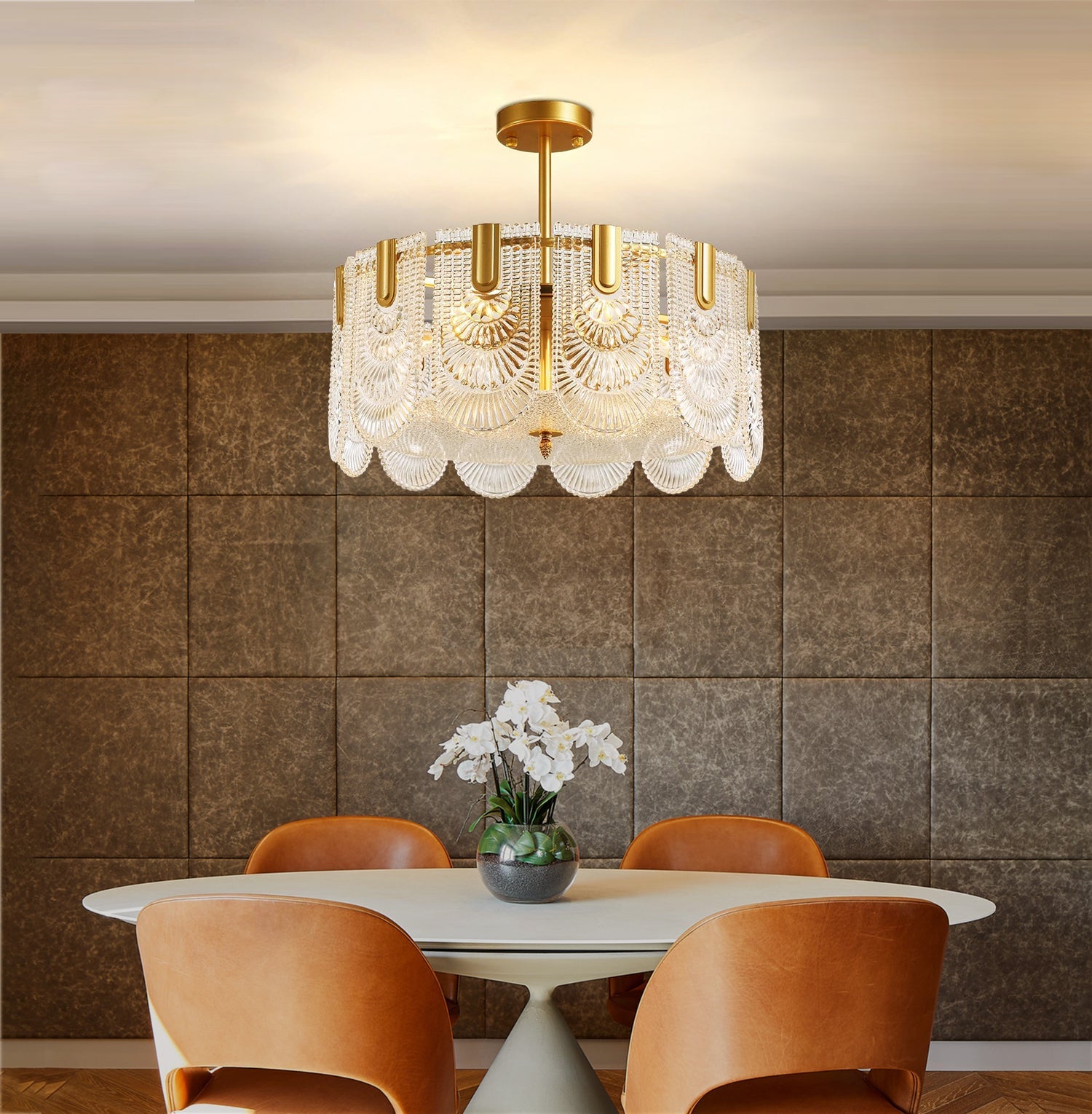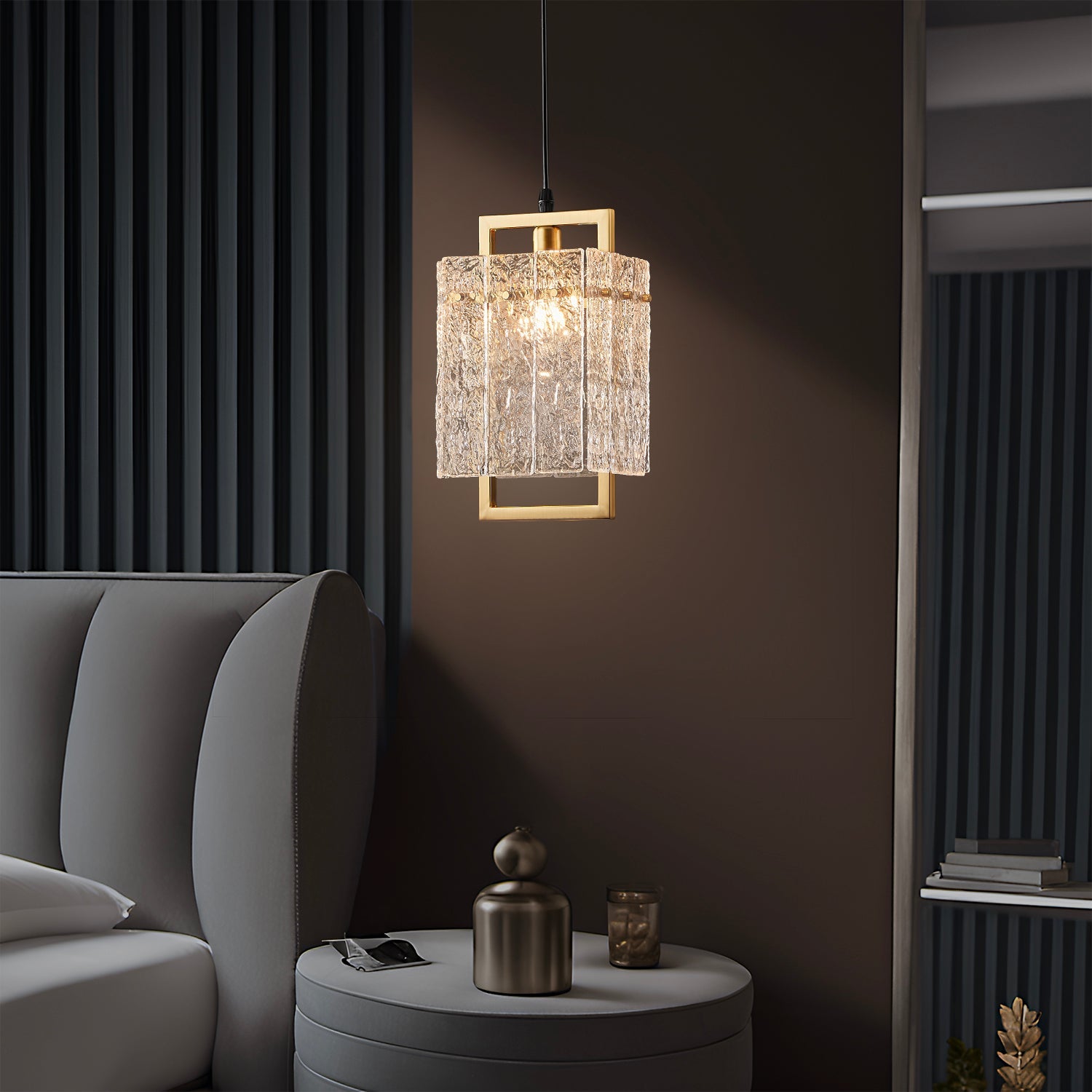Artificial skylights brighten big rooms, making them feel welcoming. They look like natural light, which helps you relax and feel calm. This also makes the room seem bigger and more open. Research shows they are better for your nerves than fluorescent lights (p < 0.05). These skylights make rooms feel cheerful and closer to nature. They come with features like brightness control and save energy. Artificial skylights are useful and look nice, fitting your needs perfectly.
Key Takeaways
Fake skylights light up big rooms and make them feel open. They copy sunlight, which helps people feel happy and focused.
Think about your room's size and shape before adding skylights. Big rooms might need more skylights to spread light evenly.
Fake skylights save energy and can cut lighting costs by 70%. This lowers your bills and helps the environment.
Using fake skylights with other lights, like LED bulbs, makes rooms brighter and gives more design choices.
Keep fake skylights clean to make sure they work well. Cleaning stops dust and keeps the light strong.
Benefits of Artificial Skylights in Large Rooms
Enhanced Lighting and Brightness
Artificial skylights give steady, even light to brighten big rooms. They don’t rely on weather like regular skylights do. These skylights provide sunlight-like light anytime, no matter the season. This keeps your room bright, even in places with little natural sunlight.
Studies show sunlight-like light can boost mood and focus. For example, research on virtual skylights found they improve indoor lighting. This creates a cozy and uplifting space. They are great for offices, schools, or hospitals where good lighting is important.
Tip: To light large rooms well, think about their size and layout. You might need more than one skylight for full coverage.
Aesthetic Appeal and Design Flexibility
Artificial skylights improve lighting and make rooms look stylish. They look like real skylights, adding a modern and classy feel. You can pick their shape, size, and placement to fit your style.
Research shows skylights make spaces look better. For example:
A study in 73 California stores showed sales rose by 40% after adding skylights.
Walmart found areas with natural light had higher sales per square foot.
These studies show artificial skylights can make big rooms look nicer and work better. Whether it’s a store, living room, or meeting hall, skylights can create amazing designs.
Note: Combine skylights with other lights, like recessed or pendant lights, to make your room even more beautiful.
Energy Efficiency and Sustainability
Artificial skylights save energy by cutting down on electric light use. Homes with skylights can reduce electric lighting by up to 70% during the day. This lowers energy bills and helps the planet.
In businesses, lighting uses about 40% of energy. Using skylights with good light transmission can cut electric light use by 70%–80%. A skylight-to-floor ratio (SFR) of 4%–6% spreads light well without wasting energy.
Did you know? Artificial skylights save energy and reduce heat gain. They keep rooms cool and lower air conditioning needs.
Choosing artificial skylights helps save money and protect the environment. Their energy-saving design is perfect for big rooms in homes or businesses that value sustainability.
Limitations of Artificial Skylights
Coverage Challenges in Large Spaces
Artificial skylights may not light big rooms evenly. The room's size and shape affect how light spreads. High ceilings or odd shapes can cause dark spots or bright areas. This makes the lighting less effective overall.
Unlike real skylights, artificial ones depend on placement and design. Large rooms often need several skylights for even lighting. This adds to the cost and makes installation harder.
Tip: Use other lights, like recessed or LED fixtures, with skylights. This helps spread light evenly across the room.
Cost of Installing Skylights
Putting artificial skylights in big rooms can cost a lot. Prices depend on materials, labor, and where you live. Below is a simple cost breakdown:
Factor |
Description |
|---|---|
Material Expenses |
Check project details and local prices for better budgeting. |
Labor Costs |
Labor prices change by location, affecting total project costs. |
Geographic Location |
Local material availability and transport costs impact pricing. |
Building Codes |
Rules may need special materials or methods, raising costs. |
Climate Considerations |
Harsh weather may need special skylights, increasing expenses. |
These factors can make artificial skylights pricier than regular ones. Big rooms needing more skylights add to the total cost.
Note: Though costly at first, skylights save energy over time. This can balance out the initial expense.
Maintenance and Durability Concerns
Artificial skylights need regular care to work well. Dust and dirt can build up, lowering light quality. Cleaning is harder in big rooms with tall ceilings.
Durability is also an issue. Parts like LED panels may wear out over time. Replacing them can be expensive, especially for custom skylights.
Real skylights often help with ventilation, but artificial ones don’t. This means they can’t improve airflow, making them less useful in some spaces.
Did you know? Using good materials and hiring experts can lower maintenance needs. It also helps your skylights last longer.
Key Factors to Think About Before Adding Skylights
Room Size and Layout
The size and shape of your room affect skylight performance. Bigger rooms might need several skylights for even lighting. Oddly shaped rooms can make it harder for light to spread evenly.
Research shows good lighting boosts mood and focus. For example:
Key Findings |
Details |
|---|---|
Room Lighting |
Skylights give softer, more natural light than fluorescent bulbs. |
Feeling Close to Nature |
Skylights make spaces feel brighter and more connected to nature. |
Comfort Factors |
Even lighting, no glare, and good color are important for comfort. |
Tip: Use controls that adjust light based on daylight to save energy.
Ceiling Height and Structure
How high your ceiling is changes how well skylights work. Tall ceilings may need bigger or stronger skylights for enough light. Smaller rooms can use compact skylights like tubular ones.
Think about your ceiling’s structure when picking skylights. High ceilings allow for larger designs, while low ceilings need simpler options.
Note: Installing skylights correctly helps them work better and last longer.
Lighting Goals and Room Style
Your lighting needs and design ideas should guide your skylight choice. For saving energy, pick skylights with shading or light controls. For style, choose skylights that match your room’s look.
Study |
Findings |
Suggestions |
|---|---|---|
Fang and Cho |
Studied energy use and daylight efficiency |
Keep a 3% skylight-to-floor ratio for balance. |
Erlendsson |
Looked at skylight performance |
Use a 4-10% ratio for saving energy. |
Did you know? Skylights can copy sunlight, making rooms feel warm and welcoming.
Alternatives and Complementary Lighting Solutions
Combining Artificial Skylights with LED Fixtures
Using artificial skylights with LED lights makes rooms brighter. This mix keeps light steady all day, even in dim spaces. LED lights help by lighting up dark corners and spreading light evenly.
-
Studies show this setup has many benefits:
Improved light measures like sDA and ASE.
More even light, especially in rooms with tall ceilings.
Tip: Place skylights and LED lights carefully for the best results. This not only improves lighting but also makes the room look nicer.
Using Pendant or Recessed Lighting
Pendant and recessed lights work well with artificial skylights. Pendant lights are stylish and brighten specific spots. Recessed lights give soft, even light that matches skylights.
Placing these lights smartly can make a big difference. Pendant lights can highlight areas, while recessed lights cut glare and improve brightness. This combo works great in places like animal hospitals, where looks and function matter.
Did you know? Pendant lights can decorate rooms while adding extra light.
Exploring Smart Lighting Systems
Smart lighting systems use technology to improve artificial skylights. They adjust light levels automatically, saving energy and keeping rooms bright.
Electric skylights with smart controls offer key benefits:
Lower energy use and electricity bills.
Less pollution, helping the environment.
Fun Fact: Some skylights can make energy while lighting your room.
Smart lighting with artificial skylights creates eco-friendly and modern lighting for big spaces.
Artificial skylights are great for big rooms with extra lights. They give sunlight-like brightness, making spaces brighter and more open. These skylights also save energy, cutting down electricity costs. But think about the room size, budget, and design before installing. Talking to an expert helps you pick the right skylight. With good planning, you can enjoy indoor sunlight and a stylish, useful room.
FAQ
What are artificial skylights, and how do they work?
Artificial skylights copy sunlight using special LED lights. They make indoor spaces look bright, even without windows. These skylights spread light evenly with panels and diffusers, creating a cozy feel.
Can artificial skylights replace natural sunlight?
Artificial skylights can’t fully replace real sunlight. But they mimic its brightness and warmth well. They work great in places with little natural light and save energy.
Are artificial skylights energy-efficient?
Yes, artificial skylights save energy. They use LED lights, which need less electricity than regular bulbs. This lowers power bills and helps the environment.
How long do artificial skylights last?
Artificial skylights usually last 10 to 15 years. Their lifespan depends on how well they’re made and used. Cleaning and checking them often can help them last longer.
Can you install artificial skylights in any room?
You can put artificial skylights in most rooms, like basements or offices. Think about the room’s size, ceiling height, and lighting needs to decide where to place them.

